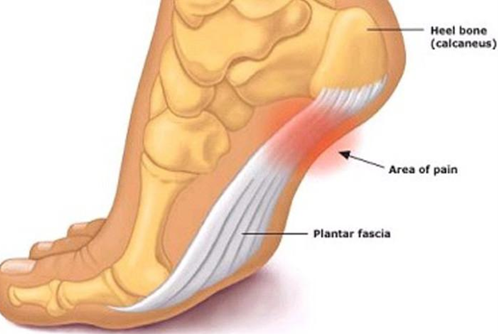Sports Injuries Part 1
Plantar Fasciitis
By Dr. Aubrey Monie [B.Sc. Physio, Ph.D., M.M.T., M.Med.Sc., Grad.Dip. Sports M.T.]
Aubrey works from our Alfred Cove practice Monday to Friday.
Background: The Plantar fascia, which helps to support the foot, is a tuff, fibrous band spanning the undersurface of the foot. It can become painful (usually closer to the heel) through wear and tear. Plantar Fascia pain affects 1 in 10 people in their lifetime. The suffix -itis implies inflammation e.g. tonsilitis, tendonitis, fasciitis, however not all fascia pain is inflamed. Without evidence of significant inflammation, this condition is gradually being referred to as Plantar Fasciopathy [pathology/condition of the fascia]. The more recent research suggests that Plantar Fasciopathy is a degenerative process rather than an inflammatory process.
Symptoms: Pain under the foot, close to the heel, sharpened with the first few steps of walking in the morning or after a long period of rest, in one or both feet. The condition affects both genders, either in elite or recreational athletes and women are affected slightly more than men.
Cause: Anatomical variations, functional demands, overuse, incorrect training technique and inadequate footwear, can all contribute to plantar fascia pain.
Treatment: Conservative treatment, including Physiotherapy [which may include manual therapy, education, over-the-counter medication, home exercise program, orthotics, technique adjustment…] has been shown to resolve approximately 90% of cases over 12 months. Surgical options are available for refractory cases.
References:
• Plantar fasciopathy: A current concepts review.
Monteagudo M, de Albornoz PM, Gutierrez B, Tabuenca J, Álvarez I.
EFORT Open Rev. 2018 Aug 29;3(8):485-493. doi: 10.1302/2058-5241.3.170080.
• Plantar fasciitis in athletes: diagnostic and treatment strategies. A systematic review
Federica Petraglia 1, Ileana Ramazzina 2, Cosimo Costantino 2
PMID: 28717618 PMCID: PMC5505577 DOI: 10.11138/mltj/2017.7.1.107












